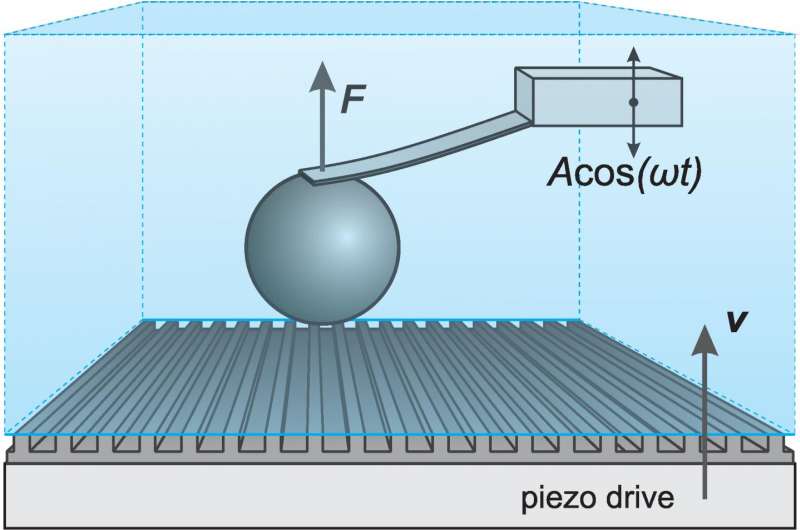How water flows near the superhydrophobic surface

Water has an unusual property when it flows closely to some specially designed surfaces—its speed isn't equal to zero, even in the layer that directly touches the wall. This means that liquid doesn't adhere to the surface, but instead slides along it. This effect is called hydrodynamic slip, and it was first described more than 200 years ago. However, it hasn't received much attention, as it doesn't significantly influence the cumulative liquid flow.
But the situation has now changed with the advent of superhydrophobic materials, in which chemical hydrophobicity meets a peculiar surface geometry—for instance, grooves or micro-pillars. In the cavities of such textures, there are often trapped air bubbles, which help the liquid to slip along the surface with almost no resistance,greatly increasing the slip length in these systems.
Complex superhydrophobic materials require new hydrodynamic theories to describe them. Such new approaches predict not only the decrease of viscous resistance, but also some peculiarities of liquid's behaviour near the anisotropic surfaces (the ones that have properties dependent on direction). For instance, one finds that near a surface covered with elongated grooves that are misaligned to the main flow, the liquid can turn and spin without any additional leverage. This effect may lead to active mixing or separation of microparticles that are immersed into the flow.
The research team from the Lomonosov Moscow State University and the Institute of Physical chemistry and Electrochemistry RAS has been working for years on theories of hydrodynamic slippage near anisotropic superhydrophobic surfaces. However, until recently, these theories could only be tested indirectly in experiments. In the new work, with the use of an atomic-force microscope, the scientists have managed not only to determine the slip length, but also to examine the analytic formulas that describe the behavior of liquid at different distances from a superhydrophobic surface.
The AFM device allowed the researchers to move an immersed spherical microparticle toward the superhydrophobic surface at a constant speed. At the same time, the researchers could monitor the sphere's location in a channel with high precision. And, besides that, the scientists measured the force that affected the sphere due to the viscous resistance of the water. The authors have obtained a theoretical solution for this process, which enabled the measurement of slip length from experimental dependence of hydrodynamic force at a height above the superhydrophobic surface.
According to authors of this new research, the results are a starting point for developing new superhydrophobic systems. Now, with confirmation of the proposed theories' accuracy, scientists have the opportunity to confirm more theories that have been previously untestable.
More information: Tatiana V. Nizkaya et al, Probing effective slippage on superhydrophobic stripes by atomic force microscopy, Soft Matter (2016). DOI: 10.1039/C6SM01074A
Journal information: Soft Matter
Provided by Lomonosov Moscow State University

















